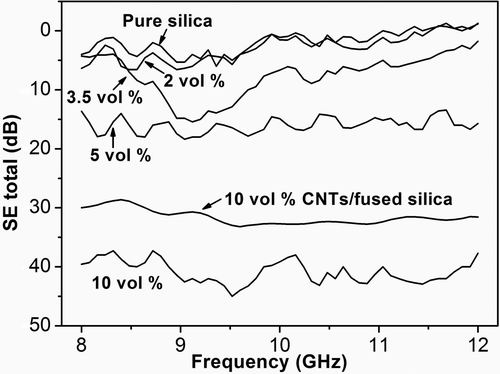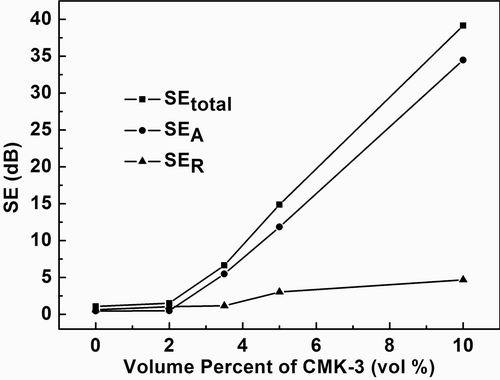Research news: Successful design and preparation of ordered mesoporous carbon (OMC)/fused silica composites
Our findings, new low-cost and highly efficient EMI shielding or EM wave absorbing materials, appear in the print issue of ADVANCED FUNCTIONAL MATERIALS, 18(2008)2995-3002.
The research team of Prof. Qian Liu cooperated with Prof. Yubai Pan’s group, SICCAS, reported that a series of novel, dense, and interesting ordered mesoporous carbon (OMC)/fused silica composites with different carbon contents has been prepared for the first time by a controllable but simple sol-gel method followed by a hot-pressing. In the as-sintered OMC/fused silica composites the carbon particles still existed in the form of perfectly ordered carbon nanowires. Conductivity measurements on the composites indicated that these novel composites are electrically conductive and have a typical percolation threshold of 3.5-5 vol% OMC. The electromagnetic interference (EMI) shielding efficiency (SE) of the OMC/fused silica composite containing 10 vol% OMC carbon is as high as 40 dB in the X band which is higher than that of a carbon nanotube (CNT)/ fused silica composite with the same carbon content ( 30 dB). This indicates that these interesting conductive OMC/fused silica composites are very suitable for an application as EMI shielding materials. Upon increasing the volume content of OMC in the composites the overall contribution as well as the increase rate of the microwave absorption are larger than those of the microwave reflection, which suggest that OMC/fused silica composites may also be promising electromagnetic (EM) wave absorbing material. Based on the promising properties of these composites this work will hopefully lead to the development of new low-cost and highly efficient EMI shielding or EM wave absorbing materials.
The two referees of the journal recommended that the paper "ordered mesoporous carbon/fused silica composites" is quite interesting. The synthesis of composite materials which consist of nanostructured carbon dispersed in a dense silica matrix. The products seem to exhibit promising potential for shielding microwave fields, which may find technological application.






